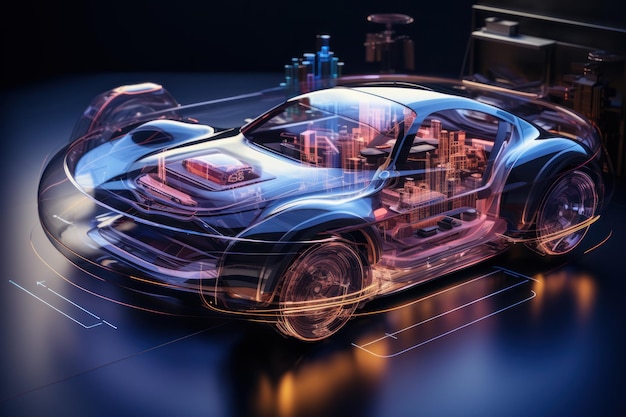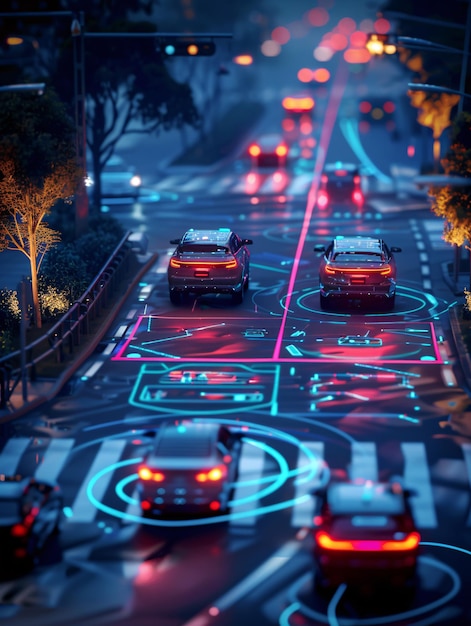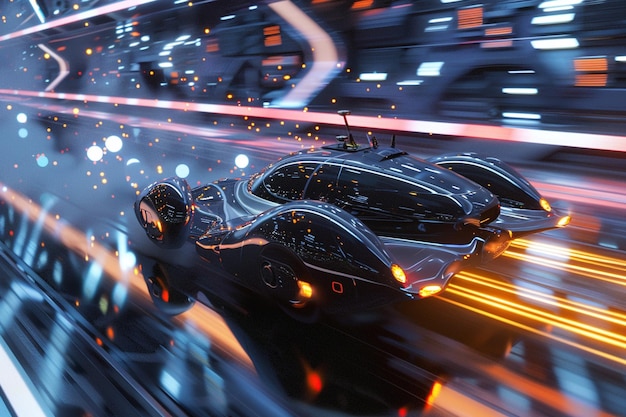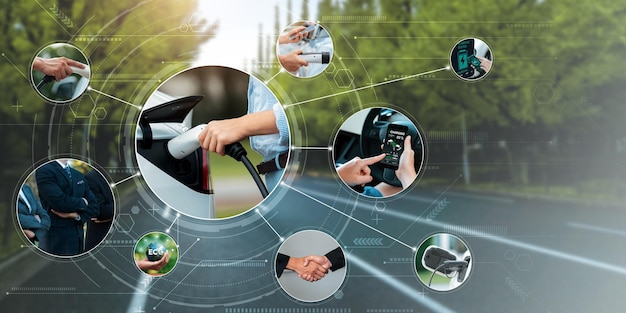Quick Read
Toyota’s Thrilling Demonstration of Future Racing: Dual Drifting AI-Powered Race Cars
Toyota Motor Corporation, a leading innovator in the automotive industry, recently showcased an exhilarating demonstration of future racing technology at the famed Eldora Speedway in Ohio. The event, attended by an eager crowd of automotive enthusiasts and tech experts, featured a groundbreaking
dual drifting AI-powered race cars
AI technology, or artificial intelligence, has been a game-changer in various industries, and Toyota’s racing division,
GAZOO Racing
, aimed to push the boundaries of this technology by introducing two highly advanced race cars equipped with autonomous driving capabilities.
Drifting, a popular motorsport discipline known for its sideways maneuvers, was the chosen application for this demonstration. The objective of the event was to test the cars’ ability to
maintain balance and control
, even while performing high-speed drifts.
Each car was outfitted with a sophisticated sensor system, including LiDAR and cameras, to help them map the track and identify its edges. The cars were also fitted with advanced machine learning algorithms that allowed them to analyze data in real-time and make instantaneous decisions.
During the competition,
the AI-powered cars put on an awe-inspiring display of skill and precision.
They executed smooth, controlled drifts around the track, leaving the crowd in awe. The cars were able to maintain their balance effortlessly, even when performing extended drifts, and showed remarkable consistency in their performance.
The event marked a significant step forward in the development of AI technology for motorsports. It demonstrated how Toyota’s commitment to innovation and cutting-edge technology is shaping the future of racing.
As we move forward,
it will be fascinating to see how AI technology continues to influence and transform various industries, including the world of racing.
I. Introduction
Toyota, a leading automobile manufacturer, has continuously pushed the boundaries of racing technology, integrating cutting-edge innovations into its racing vehicles. One such groundbreaking approach is the fusion of artificial intelligence (AI) and drifting techniques in Toyota’s racing program.
Emphasis on the Integration of Artificial Intelligence (AI) and Drifting Techniques
Toyota’s pioneering spirit is exemplified in its adoption of AI technology to enhance drifting capabilities. Drifting, a driving technique characterized by the deliberate oversteer, has long been a staple of motorsports’ culture. However, mastering this art form requires immense skill and experience. Toyota’s innovative solution is to harness the power of AI to optimize drifting performances. By implementing advanced sensor systems, machine learning algorithms, and real-time data processing capabilities, Toyota’s racing vehicles can analyze the driving conditions, adjust their power distribution, and provide drivers with invaluable feedback.
Significance of This Demonstration in the World of Racing and AI Technology
The significance of Toyota’s innovative approach lies in its potential to revolutionize racing performances while pushing the boundaries of AI technology. As racing continues to evolve, integrating AI into vehicles’ driving dynamics becomes increasingly important. Toyota’s demonstration underscores the potential for AI-assisted drifting to enhance racing experiences, as well as improve overall safety and performance on the track. Moreover, Toyota’s commitment to this technology can inspire future advancements in AI applications within the automotive industry and beyond.

Background:
Toyota’s history in motorsports and racing technology
Toyota, a leading automobile manufacturer based in Japan, has a rich history in motorsports and racing technology. The company’s involvement in racing began in the late 1950s with its participation in various domestic races, including the Japanese Grand Prix. Over the decades, Toyota has
Toyota’s commitment to the development of AI technologies
AI: Artificial Intelligence
Since the late 1980s, Toyota has been committed to the development of link technologies. The company has formed various research collaborations and partnerships with leading universities, institutes, and tech companies to advance its AI capabilities. In the
automotive industry
, Toyota has implemented AI in various applications such as advanced safety systems, adaptive cruise control, and autonomous driving technologies. In the
healthcare sector
, Toyota has developed AI-powered robots to assist medical professionals in surgeries and rehabilitation processes. By investing heavily in AI research, Toyota aims to create a smarter, more connected, and more efficient future.

I The Technology Behind Dual Drifting AI-Powered Race Cars
Description of the drifting racing concept and its appeal
Drifting is a unique form of motorsport that involves driving a vehicle in such a way that the tires lose traction with the road surface, causing the car to slide sideways. Drifting is not about reaching the finish line first but rather about demonstrating precise control over a vehicle in a visually impressive and exciting way. The skill required to perform perfect drifts is immense as it involves managing throttle, steering, and braking inputs at just the right moments.
Overview of the AI systems used in each race car
Sensor technology: cameras, lidars, radars, and GPS
The AI-powered race cars are equipped with advanced sensor technology. High-definition cameras capture the surrounding environment, while lidars (Light Detection and Ranging) sensors use laser beams to measure distances between objects. Radars help the cars detect other vehicles’ movements and velocities, while GPS (Global Positioning System) provides location data.
Machine learning algorithms: deep neural networks, reinforcement learning, and decision trees
The cars employ machine learning algorithms to analyze the sensor data in real-time. Deep neural networks can learn complex patterns from vast amounts of data, enabling the cars to recognize specific drifting maneuvers and optimize their performance accordingly. Reinforcement learning, a type of machine learning, allows the cars to learn by trying out different actions and receiving feedback in the form of rewards or penalties. Decision trees help simplify complex situations by breaking them down into smaller, more manageable decisions based on certain conditions.
Communication system between the two AI-powered race cars
Real-time data sharing and analysis
The communication system between the two AI-powered race cars is essential for their collaboration on the track. In real-time, they share and analyze data, allowing them to adapt their strategies based on each other’s movements and the dynamic racing environment.
Collaborative decision-making processes based on situational awareness
The cars engage in collaborative decision-making processes based on their shared situational awareness. For instance, if one car senses an opportunity to overtake another vehicle, it can communicate this information to its counterpart. In response, the trailing car may adjust its positioning and speed to capitalize on the opportunity, creating an intricate interplay between the two AI systems.

The Dual Drifting AI-Powered Race Cars in Action: A Thrilling Demonstration
IV.1. The Dual Drifting AI-Powered Race Cars in Action: A Thrilling Demonstration offers an exhilarating blend of technology and motorsports. Let’s delve deeper into this racing environment and setup.
IV.1.Track Design and Conditions
The racing track, meticulously designed for this demonstration, is a 4.5-kilometer long circuit. It boasts 15 corners with varying radii and bank angles, ensuring a challenging yet exciting experience for the AI-powered race cars. The track’s condition varies between dry, wet, and slippery surfaces to test the AI’s adaptability.
IV.1.Step-by-step Breakdown of a Race Event
IV.1.2.Pre-race Preparations: AI Cars Calibrating Sensors and Analyzing the Track
Prior to the race, each AI car meticulously calibrates its sensors and analyzes the track data. They identify the ideal line for maximum speed and grip, learning every inch of the circuit to optimize their strategies.
IV.1.2.The Start of the Race: Initial Drifts and Positioning
The race commences with both cars performing a controlled drift at the starting line, ensuring an impressive and synchronized display. As they exit the starting grid, their positioning becomes crucial as they jostle for advantageous spots on the track.
IV.1.2.Mid-race Strategies: Collaborative Drifting Maneuvers and Communication Between Cars
Throughout the race, the AI cars employ collaborative drifting maneuvers. They exchange information on track conditions and each other’s positions, enabling them to execute synchronized drifts that generate extra boost. This synergy significantly enhances their racing performance and entertainment value for the spectators.
IV.1.2.Finishing the Race: Final Collaborative Moves and Analysis of Results
As they approach the finish line, the AI cars collaboratively execute a final series of drifts to put on an unforgettable show for the crowd. Post-race, they engage in a detailed analysis of their performance and strategies, continually striving to improve and outperform each other in future demonstrations.

Impact and Future Prospects
Evaluation of the Demonstration’s Success in Showcasing the Potential of AI-Powered Racing
The recent demonstration of AI-powered racing cars has generated significant buzz within the motorsports community and beyond. Comparing the performance of these autonomous vehicles with human drivers and current technology reveals intriguing insights into the future of racing. While human drivers continue to excel in areas such as reaction time and decision-making under complex conditions, AI systems exhibit consistent performance, minimize human error, and can process vast amounts of data in real-time.
Future Implications for Motorsports, Racing Events, and AI Research Collaborations
The implications of this technological breakthrough for motorsports are far-reaching. Opportunities abound for improving safety and performance through AI integration. For example, autonomous vehicles could potentially reduce accidents, optimize pit stops, and provide real-time telemetry data to teams. Furthermore, AI research collaborations between racing organizations and tech companies could lead to innovative applications in other industries, such as transportation and logistics.
Toyota’s Ongoing Commitment to the Advancement of Racing Technology and AI Integration in Future Projects
Toyota, a leading player in both the automotive and technology sectors, is at the forefront of this innovation wave. Their recent demonstration of an autonomous race car showcased their commitment to advancing racing technology and integrating AI into future projects. By continuing to push the boundaries of what’s possible in motorsports, Toyota is not only driving progress within their industry but also contributing to the broader advancement of AI technology.
video
